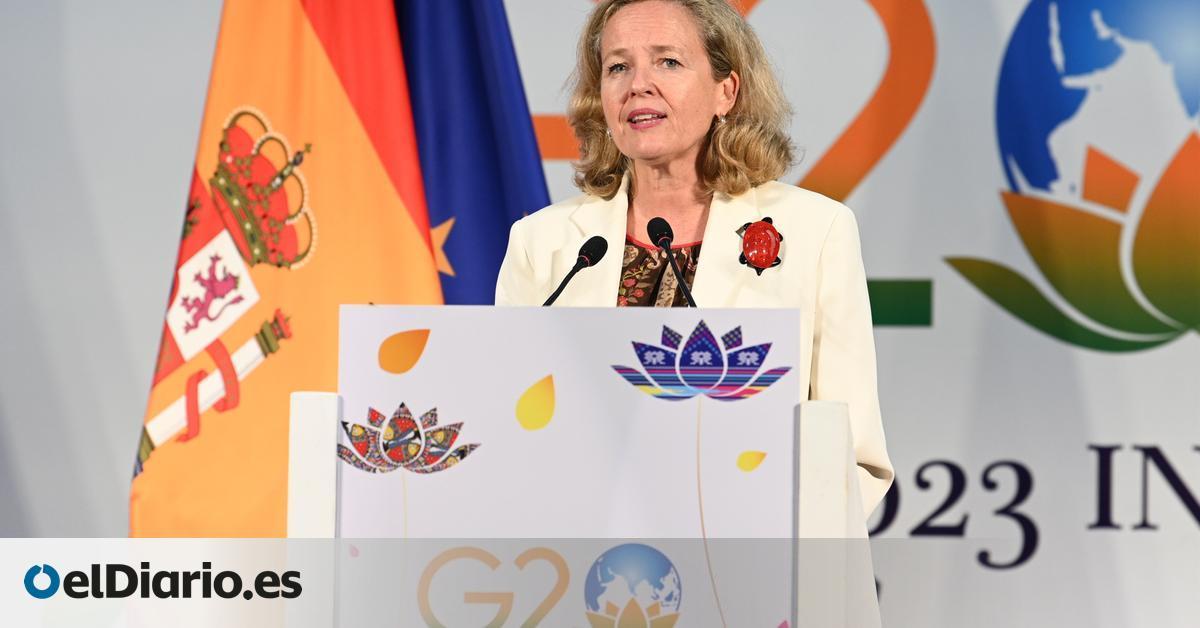
The INE has revised economic growth between 2020, 2021 and 2022 by 1.3 points and has confirmed that the recovery of pre-pandemic GDP was completed last year. As expected, Statistics has adjusted the GDP calculation and has admitted the decoupling with job creation or tax collection due to the unprecedented shock of the pandemic in 2020 and the rapid reopening of 2021.
How is the Spanish economy 15 years after the fall of Lehman Brothers?
Further
The INE (National Statistics Institute) calculated that the GDP (Gross Domestic Product) of our country recovered the pre-pandemic level between January and March of this year, after growing 0.5% compared to the last quarter of 2022, and rebound 5.5% last year and another 5.5% in 2021, after the collapse of 2020. Now it has increased these increases to 6.4% in 2021 and 5.8% in 2022. And it has also qualified in 1 tenth the drop in 2020.
“This is a review that is carried out regularly in all countries of the European Union and allows for a more disaggregated and definitive estimate of GDP by incorporating more complete information,” they recall from the Ministry of Economic Affairs, from which they highlight that “the data confirm the adequacy of the economic policy response applied during these years, as well as the effectiveness of the measures adopted, combining the short-term response to respond to the challenges that have occurred, with an ambitious plan of reforms and investments through the Recovery Plan, which is allowing the Spanish economy to be transformed.”
One of the keys to the INE review is that the increase in nominal GDP by more than 20,000 million euros allows reducing debt (the debt/GDP ratio) by an additional 1.6 points at the end of 2022. In this way, the The objective set in the Stability Program of reducing it below 110% has been brought forward to 2023.
On the other hand, the Ministry of Acting Vice President Nadia Calviño points out that the new data confirms that the recovery “has been driven by private consumption, the good performance of the foreign sector and the better performance of the manufacturing industry and the professional and scientific activities. This dynamism is maintained differentially during 2023 and will allow Spain to be the country of the large economies of the eurozone that has the greatest economic growth.”
In the most in-depth review, that of 2021, the sectors in which growth has increased the most are professional and scientific activity (directly related to the strength of exports of non-tourist services) and in the manufacturing industry. In fact, with the new figures, this last sector completed the recovery of the pre-pandemic level of activity in 2022, earlier than previously estimated.
It was precisely since the unprecedented and profound crisis of 2020 that the INE’s GDP calculation and the evolution of other important economic indicators, which had always gone hand in hand, were separated. This lack of correlation clashed with the logical and predictable behavior of the different variables: when the economy grows, the number of people with work increases and the State receives more money through VAT, personal income tax, corporate tax… This norm has been always fulfilled, with very slight variations. On the other hand, since 2020, the GDP recovery has been decoupled, for example, from the pace of job creation. He stayed behind.
GDP adds up everything that is produced in a country (taking into account companies, the public sector, workers and the self-employed, taxes, pensions…) and is the main yardstick for measuring activity in economies. developed. Of course, it is an imperfect indicator. In addition, it was subjected to an unknown uncertainty due to the hibernation of a large part of social and economic relations for months due to the pandemic and the subsequent irregular reactivation, which the war in Ukraine only complicated. But something was totally distorted.
Recently, Miguel Artola, one of the experts who has been explaining the errors in the GDP calculation in elDiario.es, defended that “the shock of 2020 and the exit of 2021 justify the bulk of the problems. When the INE or equivalents publish GDP data for the most recent quarters/years, they must take indicators that, by definition, are partial. For example: employment, industrial production or cement consumption. The indicators work well in situations of relative normality, but worse when there is a near-paralysis of a sector, followed by a rapid reopening.”
Within a year, the INE will review its calculations again and, according to the analyzes of Artola himself and Francisco Melis, it should raise the level of GDP even further, given that another 80,000 million euros in GDP would still need to be collected (up to 6 more points), after increasing it by 20,000 million this Monday.
Source: www.eldiario.es

